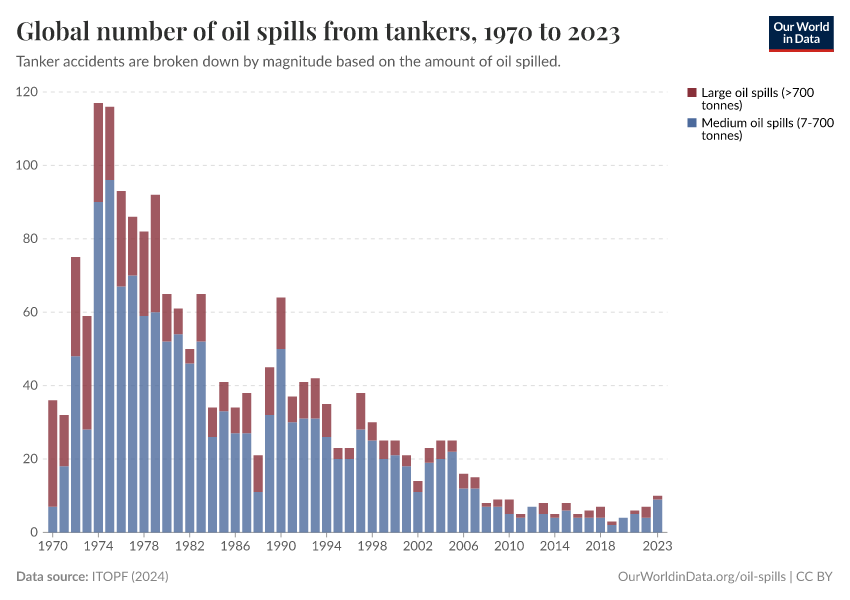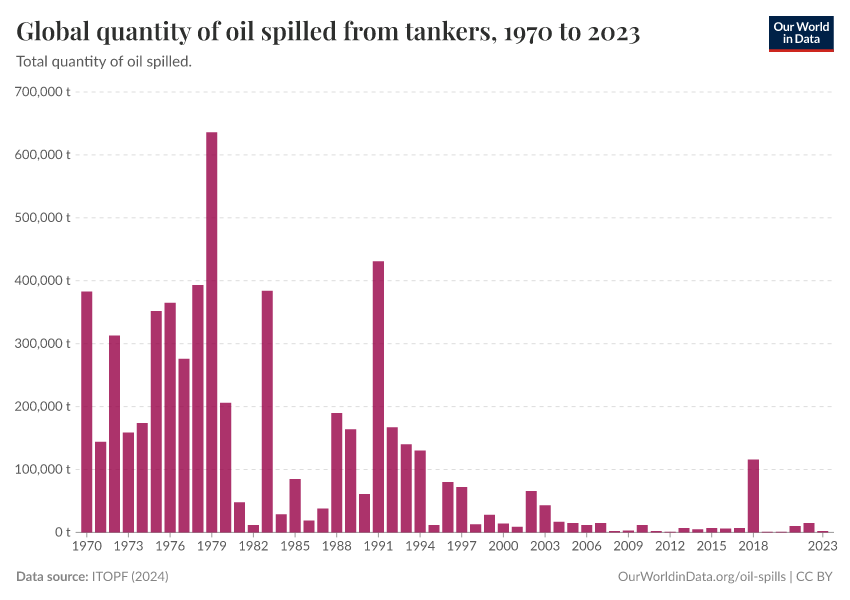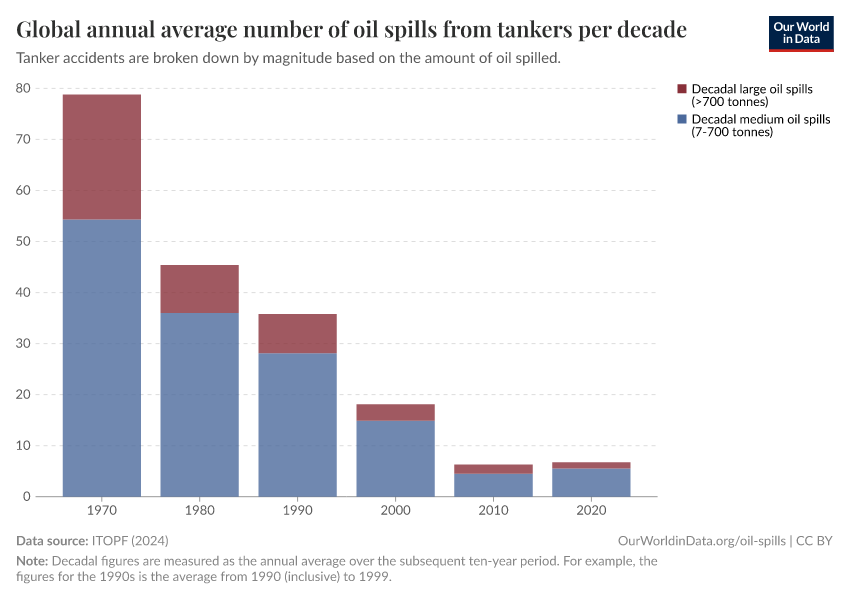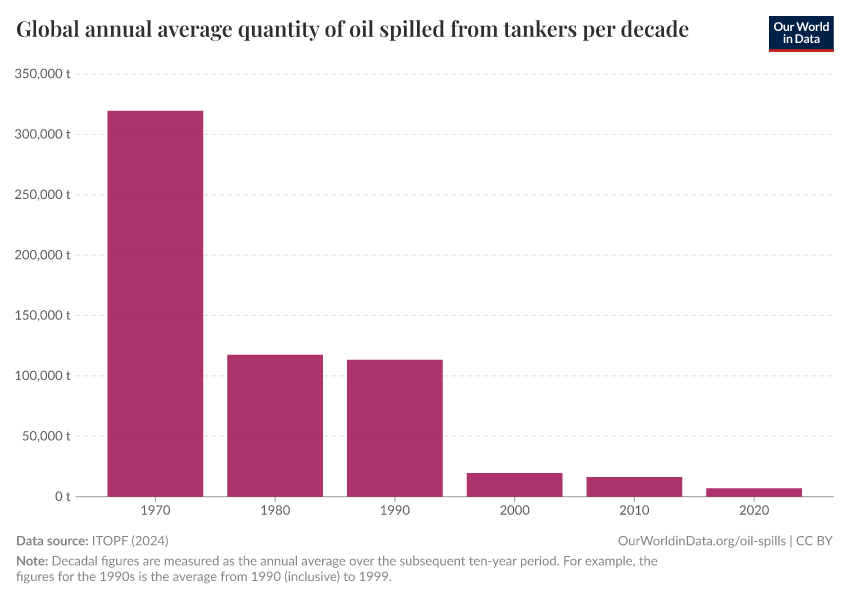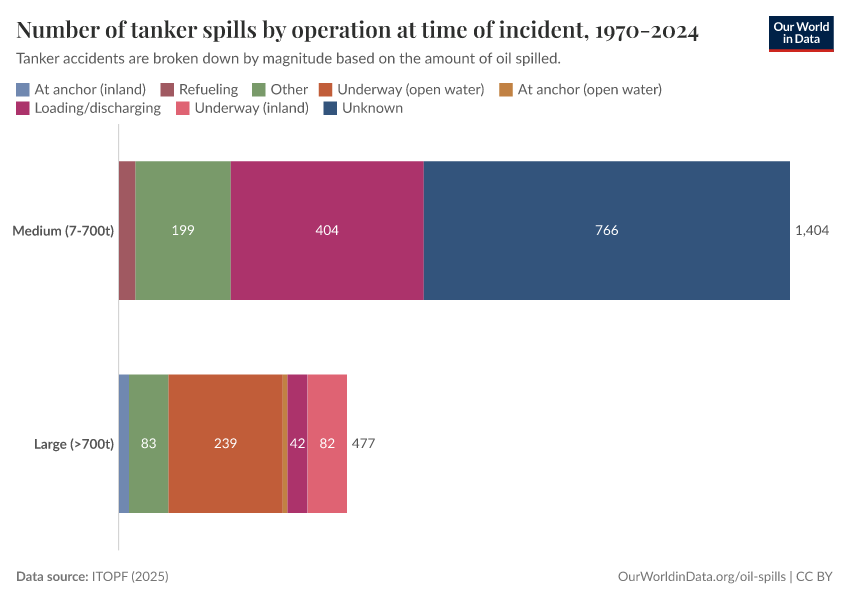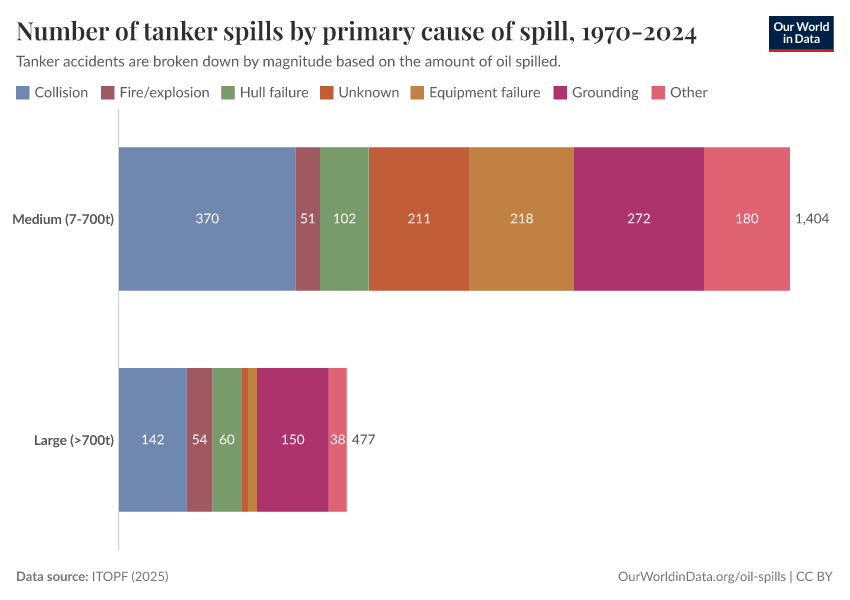Oil Spills
How often do oil spills happen? How did the frequency of oil spills change over time?
Oil spills are disasters that can have severe social, economic, and environmental impacts.
They are the release of crude oil or refined petroleum products from tankers, rigs, wells, and offshore platforms.
These spills are most common in marine environments but can also occur on land. They can have disastrous consequences for local ecosystems, and be expensive due to the loss of oil and the costs involved in their clean-up.
The number of oil spills and the quantity of oil that is spilled from tankers has fallen substantially in recent decades.1
On this page, you can find all our data, visualizations, and writing relating to oil spills. Specifically, this refers to oil spills from tankers – container ships transporting oil – where consistent, high-quality global data is available.
But not all oil spills come from tankers. They can also come from other sites, such as offshore oil rigs and damaged pipelines. The world's largest (and most well-known) event was Deepwater Horizon in the Gulf of Mexico in 2010. This disaster was caused by an explosion in a drilling rig. The US Government estimates that 4.9 million barrels of oil were released (equivalent to around 700,000 tonnes).
Tracking non-tanker oil spills is essential, but we are unaware of any global, updated databases that include this. Filling this gap would be critical to global environmental data and monitoring.
Key Charts on Oil Spills
See all charts on this topicEndnotes
This is based on data published by the International Tanker Owners Pollution Federation (ITOPF).
Cite this work
Our articles and data visualizations rely on work from many different people and organizations. When citing this topic page, please also cite the underlying data sources. This topic page can be cited as:
Hannah Ritchie, Veronika Samborska, and Max Roser (2022) - “Oil Spills” Published online at OurWorldinData.org. Retrieved from: 'https://ourworldindata.org/oil-spills' [Online Resource]BibTeX citation
@article{owid-oil-spills,
author = {Hannah Ritchie and Veronika Samborska and Max Roser},
title = {Oil Spills},
journal = {Our World in Data},
year = {2022},
note = {https://ourworldindata.org/oil-spills}
}Reuse this work freely
All visualizations, data, and code produced by Our World in Data are completely open access under the Creative Commons BY license. You have the permission to use, distribute, and reproduce these in any medium, provided the source and authors are credited.
The data produced by third parties and made available by Our World in Data is subject to the license terms from the original third-party authors. We will always indicate the original source of the data in our documentation, so you should always check the license of any such third-party data before use and redistribution.
All of our charts can be embedded in any site.
